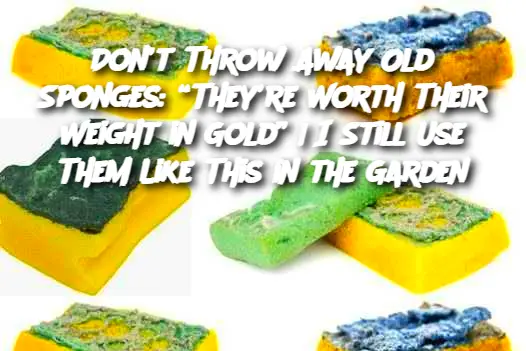Introduction:
Most of us are quick to toss out old kitchen sponges once they’ve done their duty, assuming they have no further use. But did you know those worn-out, scruffy sponges can be a gardener’s secret weapon? Far from being trash, old sponges are incredibly useful in the garden for retaining moisture, aiding drainage, and even protecting delicate plants. In this article, I’ll show you how I repurpose mine—and why you might never throw one away again.
Ingredients (What You’ll Need):
Old kitchen sponges (cleaned and dried)
Scissors
Flower pots or garden beds
Potting soil
Seeds or seedlings
Optional: gloves and disinfectant (for cleaning sponges)
Preparation (How to Reuse Sponges in the Garden):
Clean the sponges thoroughly with hot, soapy water or disinfect them using a vinegar solution or by microwaving damp sponges for 1-2 minutes. Let them dry completely.
Cut the sponges into smaller pieces depending on the size of your pots or garden bed.
Place a layer of sponge pieces at the bottom of your flower pot or under the root zone in garden beds.
Add soil on top as usual and plant your seeds or seedlings.
Water as needed—the sponges will absorb and slowly release moisture, keeping the soil consistently damp.
Serving and Storage Tips (or rather, Usage & Longevity):
The sponge pieces can last an entire growing season or more, depending on exposure and weather.
Replace them if they start to break down or smell unpleasant.
Use this method for both indoor and outdoor potted plants, especially during dry seasons.
Store extra cleaned sponge pieces in a sealed bag in a dry area for future use.
Variation (Other Garden Uses for Old Sponges):
